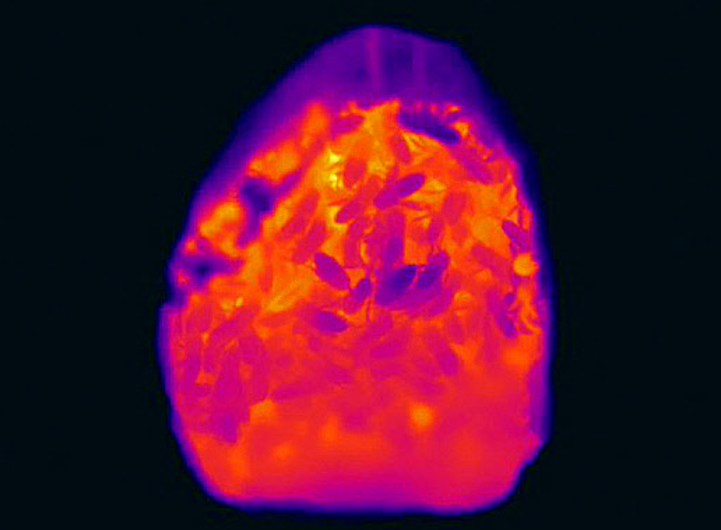Langstroth’s “Intelligent Cultivator” Part 2 of 7 – Tree nest vs. Man-made Enclosures
- Posted
Thermal Conductance: Tree nest vs. Man-made Enclosures
Thermal conductance is the ability of a material to allow the flow of heat from its warmer surface through the material to its colder surface. This transfer of heat energy continues until all the material comprising the solid is at thermal equilibrium, meaning the temperature throughout the material is the same. Also, the type of material and its related thickness has a determined R-Value which is the measure of how well a two-dimensional barrier, such as a layer of wood, a window, or a completed wall or ceiling resists the conductive flow of heat. So, the material and its thickness can affect both the thermal conductance and determined R-Value.
These factors have a significant effect on the metabolic energy expended, and resources utilized within the nest by the colony in maintaining homeostasis (stability) of temperature and humidity. The awareness that heat is transferring from the nest to the outside environment through the enclosure is therefore essential to the understanding of homeostasis and other energy-intensive behaviors such as honey ripening. This relationship, a colony mass-to-thermal conductance ratio of the enclosure, fills in a missing piece in the understanding of the heat transfer from the honeybee nest and the honeybees resulting observable behaviors in trying to restore homeostasis for survival and colony expansion.
For example, honeybees regulate their colony temperature through variable heat generation and variable colony conductance (i.e. clustering). They do not hibernate in winter and begin to cluster when the nest environment temperature falls below 18°C/64 °F. They also begin to come out of cluster if the temperature starts to rise above 10°C/50 °F based on a colony size/density of 1,250 honeybees (0.2kg/200grams/0.16g per honeybee) or greater.
Considering the outside environment, the onset of clustering in thin-walled man-made enclosures with high thermal conductance and minimal R-Value, is expected to happen when external temperatures decline to 15 to 5 °C/59 to 41 °F but in thick-walled tree nests for even small colonies clustering will occur at a much lower external temperature of -60°C/-76°F. Recent thermal conductance research using various hives and thermal models of trees found that the heat transfer rate is approximately 4 to 7 times greater in thin-walled man-made enclosures compared to a typical tree nest in winter configuration.
The biological consequences of this are that in a thick-walled low thermal conductance enclosure such as tree cavity, honeybees will maintain mobility well into winter. However, because of the low conductance and resulting hysteresis (lag between cause and effect), should the honeybees be provoked to cluster by extreme weather or long periods of darkness, it will take significantly warmer weather outside the enclosure to break the cluster. This behavior is well suited to coping with long lasting extreme events by ensuring that the honeybees do not start expending energy and consume resources at higher rates as a consequence of early spring brood with their requirements of increased heat and humidity before temperatures and foraging opportunities are optimal.
Honeybees in tree cavities also gain additional thermal advantage by constructing their wax combs from the top or ceiling of the cavity downwards, retreating upwards when they need to conserve heat, and expanding downwards as the colony grows and increases it heat and honey production. Warmth is also increased by maintaining high humidity levels around their brood especially near the ceiling caused by warm water vapor rising and being trapped in the dome of the ceiling which is not readily absorbed by the wood fibers that are coated with a low moisture permeable substance called propolis. This implies higher levels of humidity in the nest, increased survival of smaller colonies and lower Varroa destructor breeding success (more on that point later).
Man-man enclosures only allow a very limited vertical movement especially in the winter and early spring. Also, because low propolis producing honeybees are preferred especially by commercial beekeepers who find it makes working their hives harder the enclosures are much more permeable to moisture reducing internal humidity. As stated above their thermal conductance is much higher because of the thin materials, and the enclosures may even have upper or multiple entrances making it harder for the honeybees to maintain temperature and humidity homeostasis. These factors alone could be altering our understanding of honeybee biology when compared to their behavior in their preferred environment, the tree nest, normally not considered in academic experiments.
